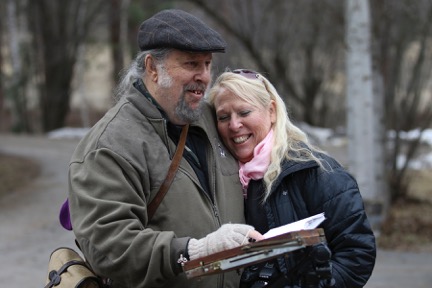John and Suzie Seery-Lester share the inspirational story of how their lives came together through art. Bonus: Learn about their colors choice and techniques for painting representational art.
*Update > We regret to announce that since this article was originally published, John Seerey-Lester, “the Godfather of Contemporary Wildlife Art,” passed away in June 2020. Read more in this tribute.
Two in the Bush
BY JOHN AND SUZIE SEERY-LESTER
Husband and wife artists are not unique or new. But our story may be somewhat different. Artists are usually solitary creative people. Oh yes, they might have spouses who critique or praise their work, but it is very different for two individually creative people to work side-by-side in harmony. Even the events leading to our first meeting are very different. Some call it the “fickle hand of fate;” we prefer “destiny.”
John emigrated from England in 1980 to join Mill Pond Press, based in Florida, where over the next two decades he produced some 400 limited edition prints. His success with Mill Pond Press opened up many opportunities for him. He had already visited and worked in East Africa before coming to America, but through Mill Pond Press he was able to visit six of the seven continents, including Antarctica, where he studied and painted penguins as well as other wildlife. His subjects have included giant pandas in China, polar bears and grizzlies in the Arctic and Alaska, and condors in the Andes. He also made two trips a year to his beloved Africa.
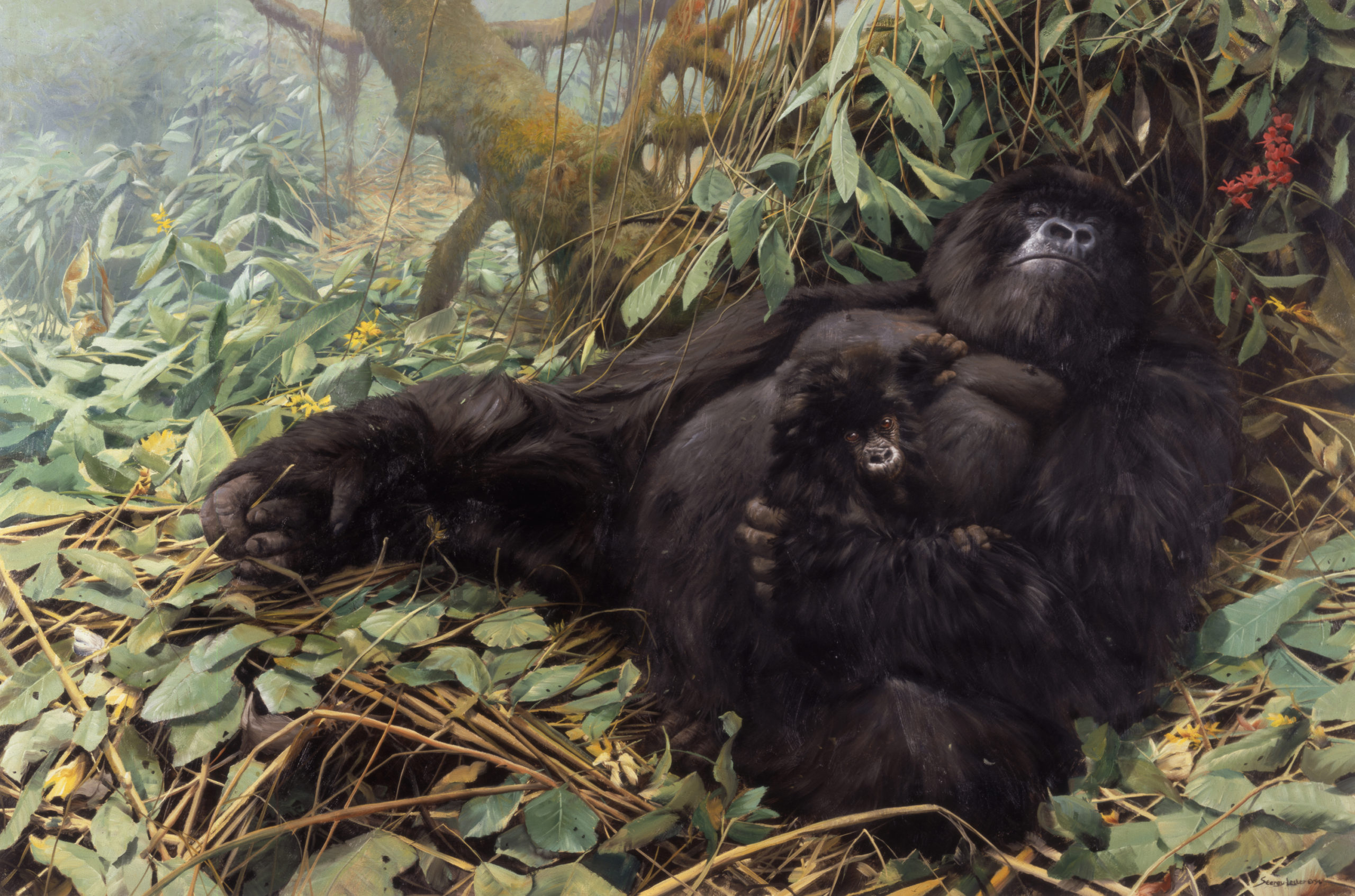
In the early 90s John was making regular visits to Guatemala, courtesy of The Peregrine Fund, to study and paint the creatures of the rainforests, in particular the Harpy Eagle. He learned to rope climb the massive trees in the dark and watch the rainforest come alive. “An amazing experience,” he says.
In 1994, while conducting a painting MasterClass in Guatemala, John wanted to share this experience with his thirty students. There was only room for about four others on the tiny platform at the top of the 200-foot tree, and each day he selected four people to accompany him up the tree. By chance, Suzie was in the first group. Little did we know that six years later we would be married and sharing our field trips on a daily basis.
“It was just the beginning,” says Suzie. “When the sun came up, the mist rose, the temples of Tikal appeared, and the toucans and macaws flew by. We were hooked.”
Growing up, Suzie always painted and drew as an escape. And like any child, she didn’t really know what she was doing, but she enjoyed the effort. Later, when she joined the CIA and was the first female diving instructor trainer in the U.S., she was able to travel the world to see magnificent undersea creatures, which she painted. She squirted oil paint directly from the tube, never mixing colors, and the magnificent dolphins, sharks and whales appeared on her canvases.
When we met up that tree, John was working full time as an artist and Suzie was painting part time, at her home in California, while holding down a regional sales management position with a monthly quota of $2 million.
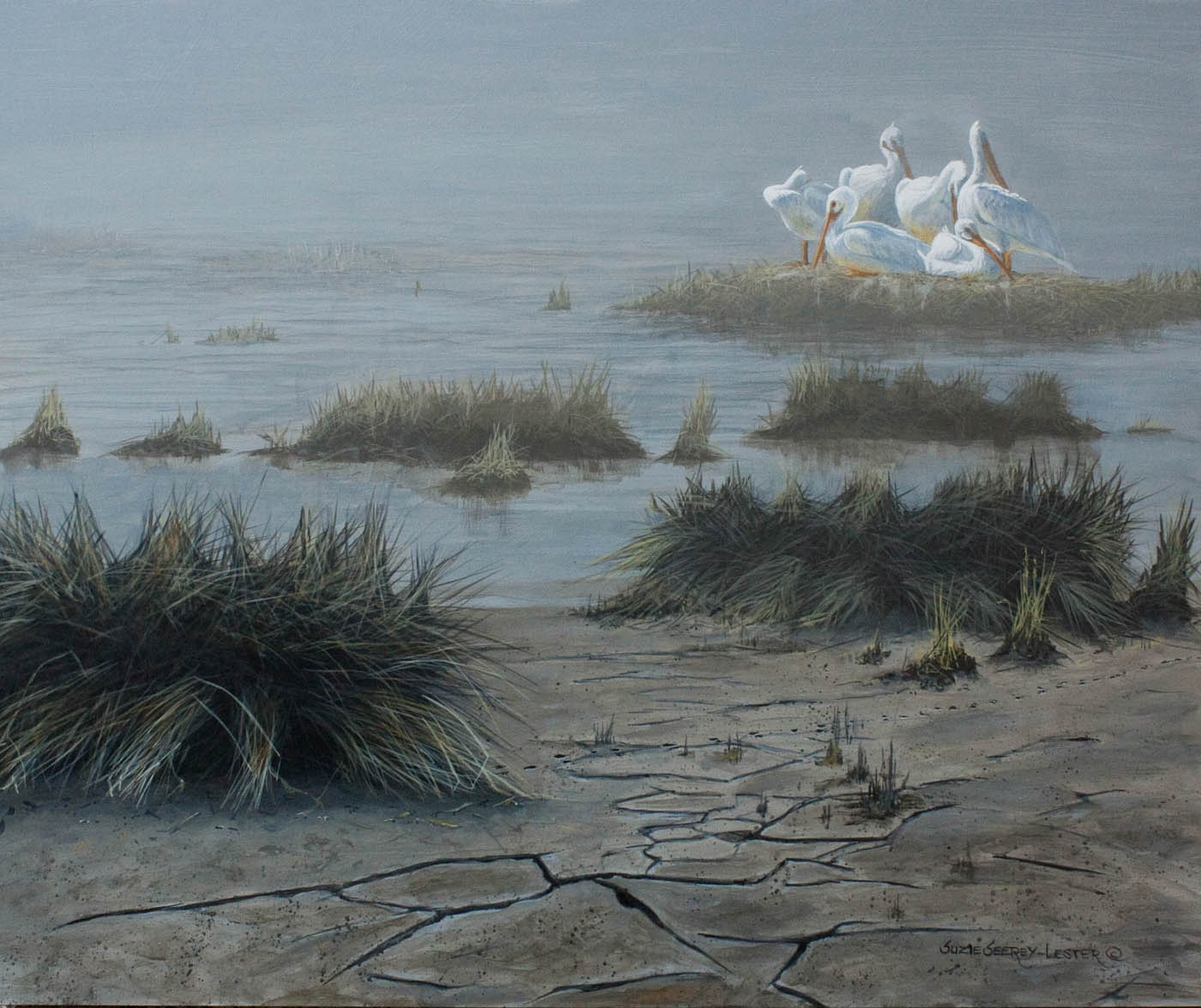
In 2000 we were married, having two wedding ceremonies, one in England for John’s invalided mother and one on Useppa Island in Southwest Florida.
We decided to make our home on the Gulf Coast of Florida, where Suzie has been a volunteer for the Sea Turtle patrol with Mote Marine, in Sarasota, for the past 16 years.
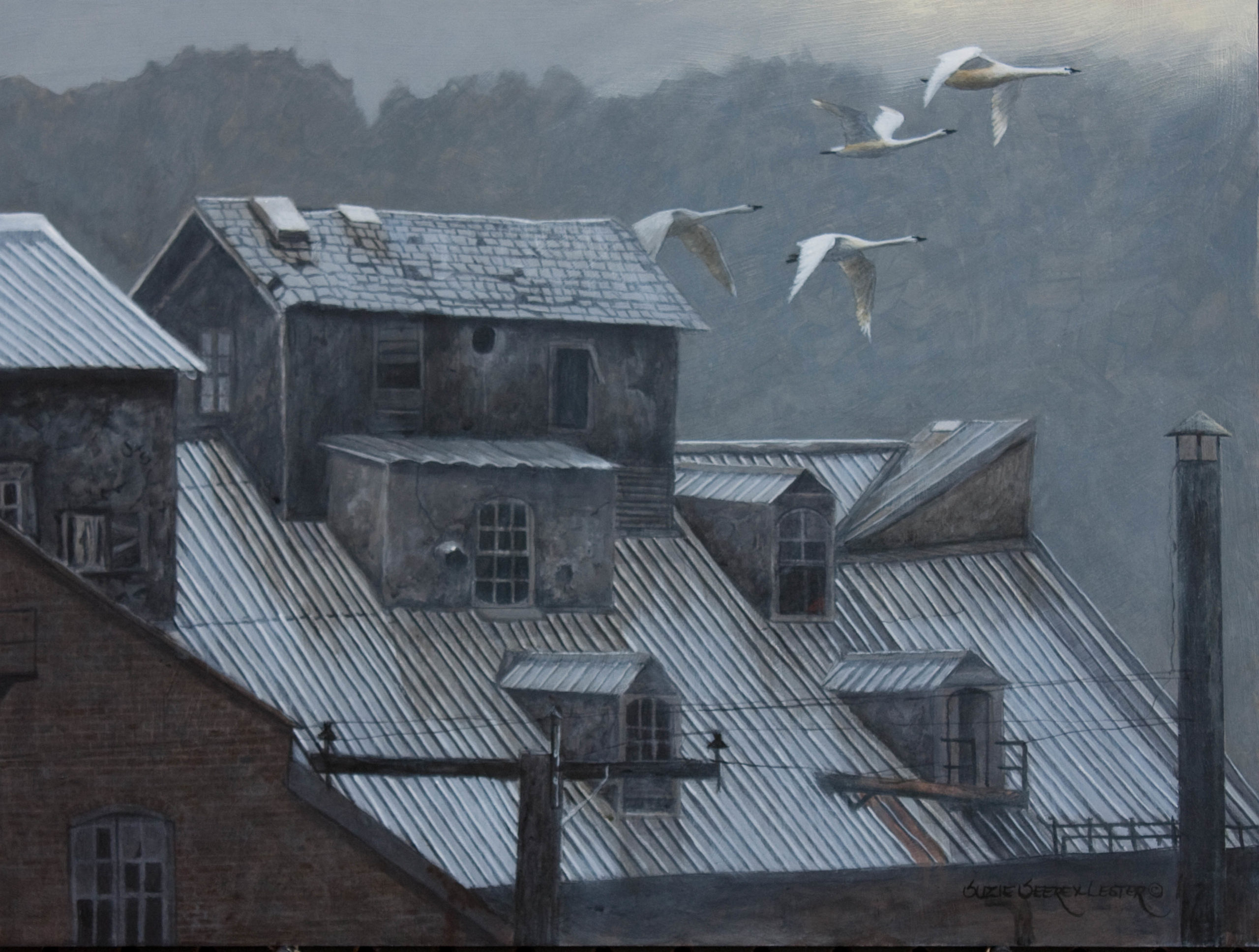
Today we sit side by side in our studio, surrounded by books, paintings, paints, canvas, props and our dogs. We are so lucky as artists to have that extra set of eyes and someone to bounce ideas off. We discuss color, composition, and ideas before we start a painting. John usually starts painting at 9:00 a.m. Suzie does all our business, marketing and sales, so she usually starts painting around noon. We paint seven to ten hours per day, seven days a week. We never take a vacation, because we always paint wherever we travel, side by side.
We have another studio, which we call “Studio B” where we have our office, and where our assistant/secretary handles our day-to-day business. We sell our books, instructional DVDs and prints from here. It is also where we conduct our Florida MasterClasses. We do classes in other locations as well, mainly in America, but we have conducted them in many other places from Canada to Africa.
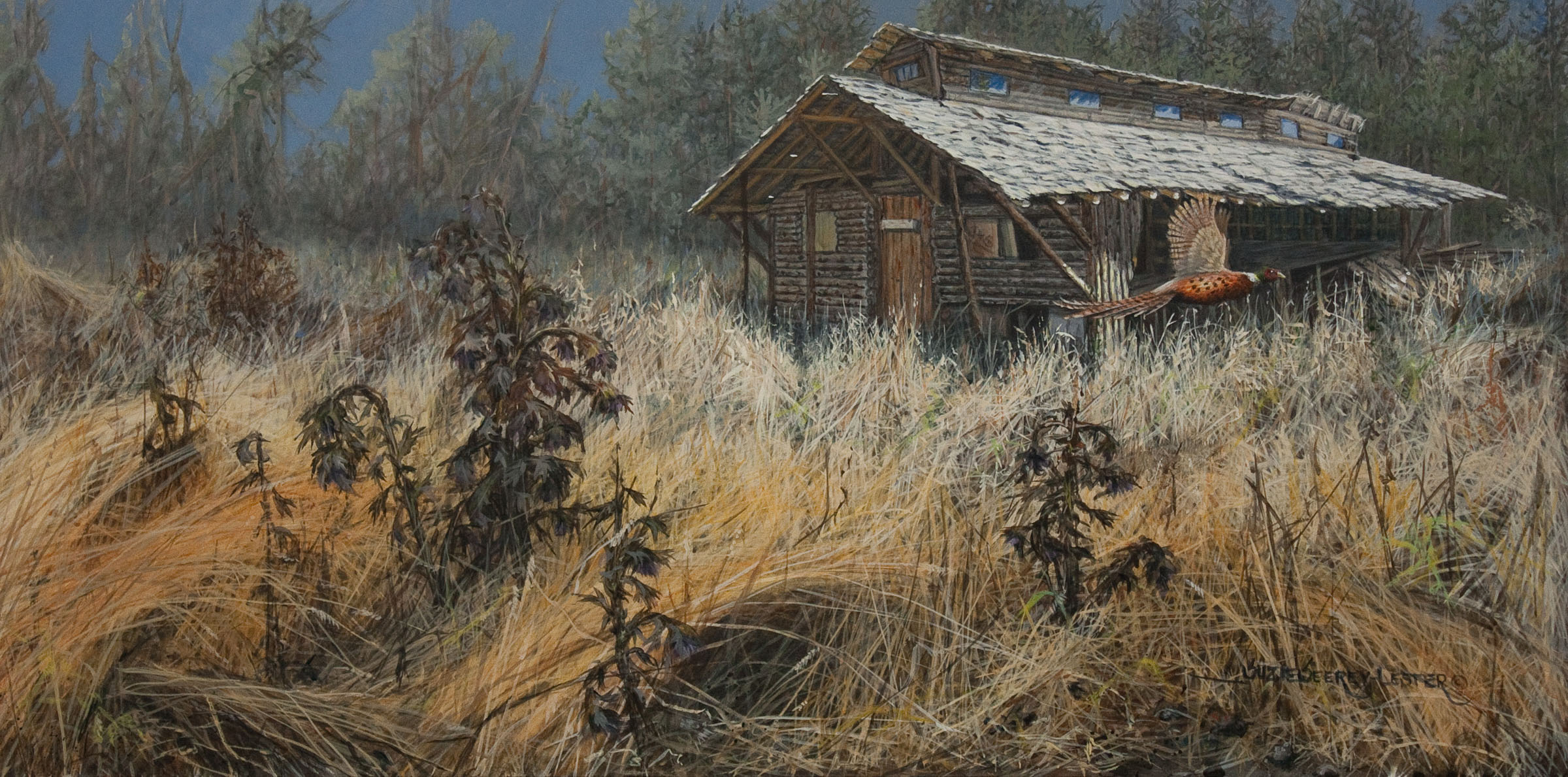
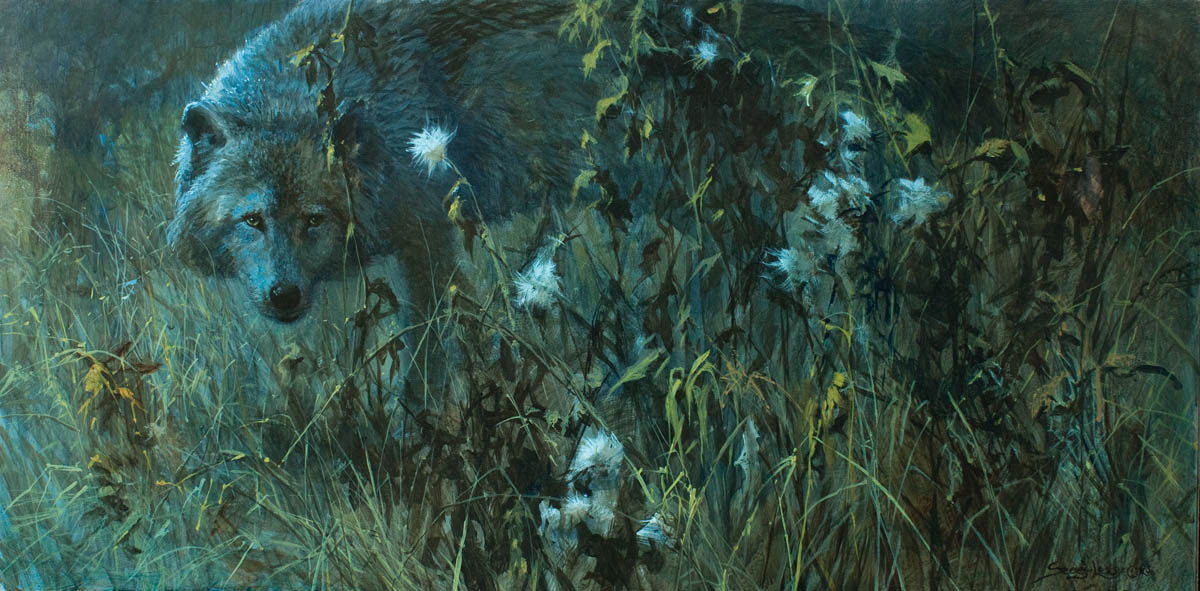
Of course we do shows together and share the same galleries. We have found that we inspire each other — one of the many benefits of working together. We are also honest critics of each other’s work, which we think is very important. The benefit of having two artists in one studio under one roof is that when one asks the other for an opinion, they usually know how to fix whatever the problem may be. Their suggestions make sense because they are artists and can identify with the particular problem and usually come up with a solution. Each of us knows what it is like to have a block — and hopefully know how to cure it. If we don’t at least there will be understanding.
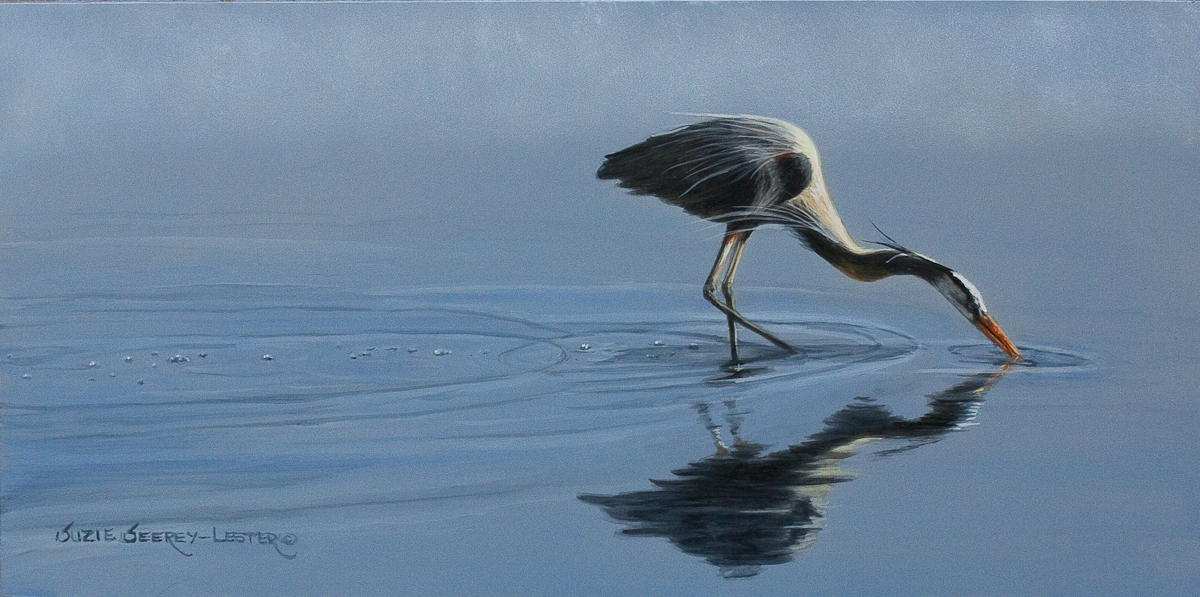
Since turning professional in 1974, John’s painting techniques have changed and he feels we are never too old to learn. “It is good to experiment,” he says. “You never know what you might discover.” We think that as our tastes in life evolve, so does our art; if it doesn’t, then an artist can get stuck in a rut and become stale.
We are each inspired by different things, although primarily we paint wildlife. John also paints figurative, but it is the use of dark and light masses that excite him. John’s compositions come about for various reasons, depending upon what he wants to achieve. He is fascinated with mystery, which he introduces into his paintings through the use of mist, rain or moonlight. “The odd blizzard can also be an exciting element,” he says.
We both prefer acrylic over oil for the majority of our paintings. John feels he can control the dark and light much better through this medium. Years ago, he began to use a mid-gray base to his acrylic scenes, so that the light and darks in the piece could be established early. We now both adopt this method. We mix equal parts of burnt umber, ultramarine blue and Payne’s gray with gesso until we get the desired value, and are not fighting the white.
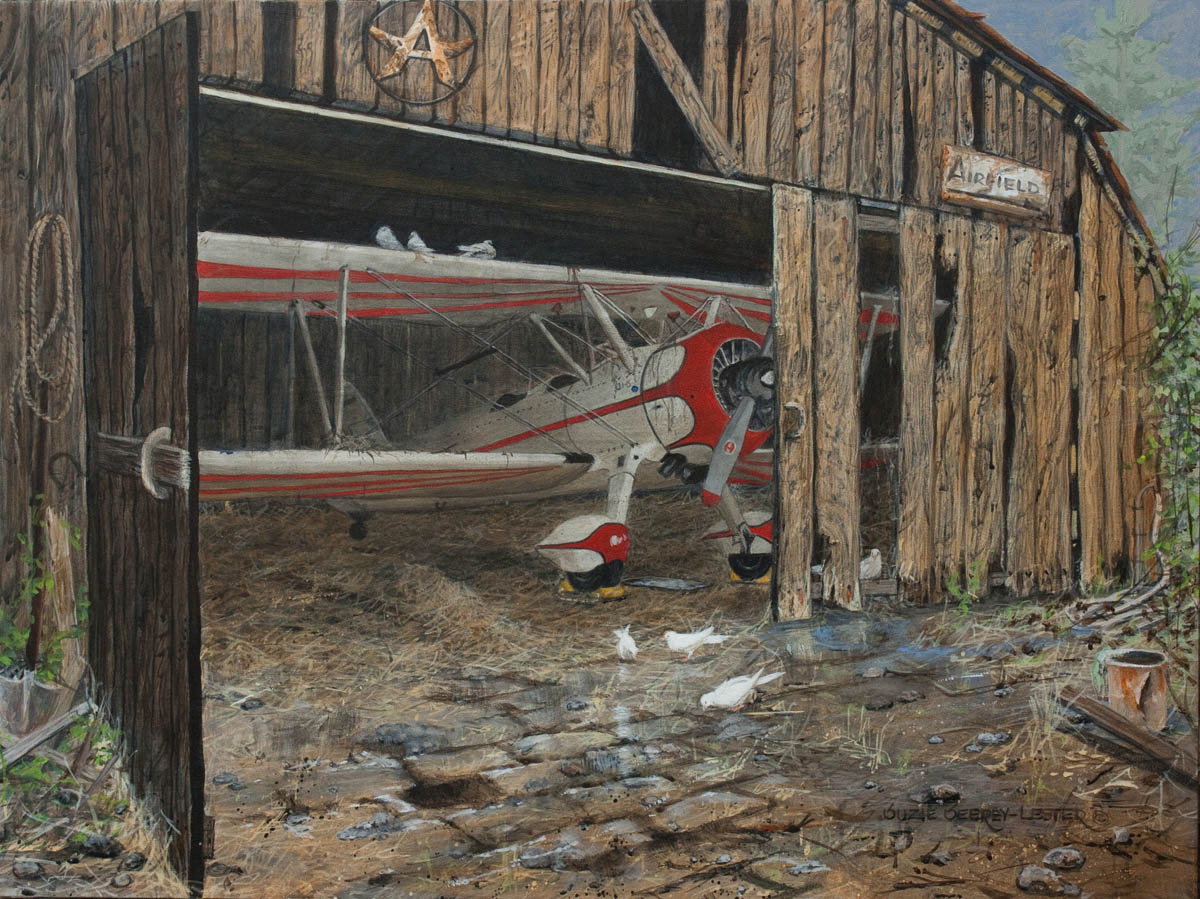
We both tend to use flat brushes almost exclusively and treat the acrylic like watercolor, using thin washes of very transparent paint throughout most of the painting. Only at the end will we use the acrylic as an opaque medium. We will often push back areas as we go along by applying washes of pigment mixed with gesso and darken other areas by applying thin washes of pigment with Payne’s gray. But John has to be careful, because Suzie is the “Dark Police” in our studio and prevents him from going too dark, as he has admitted having a tendency to do.
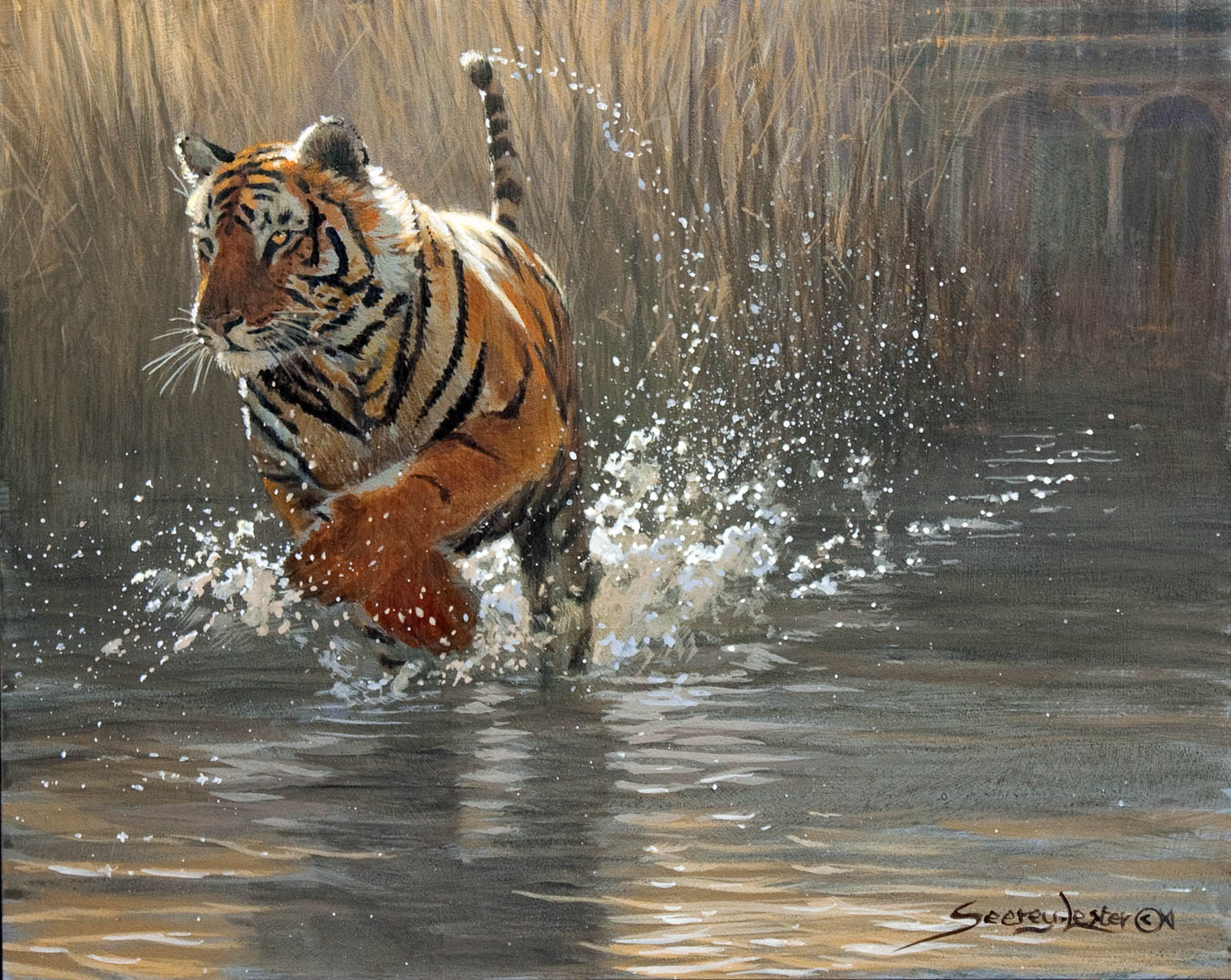
John’s palette for both oil and acrylic is raw umber, burnt umber, ultramarine blue, Payne’s gray, burnt sienna, raw sienna, yellow ochre, Naples yellow and white gesso (gesso for acrylic and titanium white for oil). Occasionally he includes cad yellow and cad red.
We both do a thumbnail sketch on newsprint before we start on the main painting. John also always carries a Moleskine to capture ideas. We sometimes discuss our compositions. “I may ask his opinion,” Suzie says. “His thoughts are usually the same as mine. We think it is great to have that second set of eyes, and we each value the other’s opinions, because I learn from him, and want to improve my paintings.”
Suzie starts by using raw umber and Payne’s in very thin paint to block in the subject. The white is pure gesso — we find this covers easily, and you can make it as thick or thin as needed.
Suzie loves to paint barns and birds. John favors large mammals and historic scenes, which he calls “predicament paintings” — someone or something is usually in trouble.
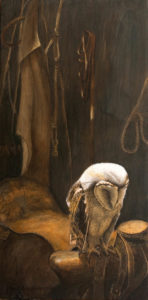
In Suzie’s painting “Asleep in the Saddle” (right), after blocking in the little barn owl, she starts to add other elements. In this painting, she worked on the bird first, then the saddle. She wanted a strong light on the owl, and the top of saddle was next, so she took a flashlight out to where the saddle is stored. She moved the light around the saddle until she achieved the desired light. We have a lot of props—saddles, ropes, old pots, pans and coffee pots, even an old cot—things we both use in our paintings.
The elements in the background are just blocked in with thin color. At this point Suzie can change things, erase them, move them and start to darken the background. She gradually builds up the paint on the elements, and finally applies a mix of Payne’s gray and raw umber over the entire painting, except the very light areas. She may apply as many as 25 very thin layers of the mix, letting each wash dry completely before the next layer. A layer of Yellow Ochre is then applied to give it that glow.
Our palettes are similar, but Suzie has a few different colors: Payne’s gray, burnt umber, raw umber (transparent), raw umber (opaque), transparent red iron oxide, raw sienna, yellow ochre, Naples yellow, cad yellow, sap green, and three to four different values of neutral gray, from dark to light. She uses the same palette in oil, and uses a similar technique, using thin layers of oil at the beginning. She uses old, worn-out brushes to achieve the grain of the wood in her barn paintings.
With oil, John paints differently. He begins by laying down a raw umber glaze using some Liquin mixed with mineral spirits. Once this is done, and before it is fully dry, he will begin to lift off with a stiff brush and some mineral spirits, basically producing a negative drawing by lifting off. John then paints in the darkest darks and keeps the negative areas dry; he can then apply the lightest lights to avoid muddying. There is no blending at this stage.
John’s subject matter is very different from Suzie’s. He is interested in historic events and is currently writing and producing coffee table books, which include stories about legendary outdoorsmen such as Theodore Roosevelt and Winston Churchill. Their journals inspire his paintings, which he then writes about. He is currently working on the fifth book dealing with legendary explorers.
To achieve his paintings, John first has to find models who resemble the historic people he intends to paint, and then he gets all the props for that era — many of which we have at our studio. A lot of research is done before he can sit down and paint.
This new work allows him to combine his love of wildlife with that of history. Suzie often poses as Victorian ladies and, like many of our friends, she is in several of his paintings. His son John Jr., also models for him, sometimes as young Theodore Roosevelt.
We are so fortunate to work side-by-side in the field and in our studio. Where so many artists are alone in their studios, we have each other to bounce ideas off, see things the other can’t see, and basically help the other make the best possible paintings. It has been wonderful, and continues to be an amazing, unforgettable ride.
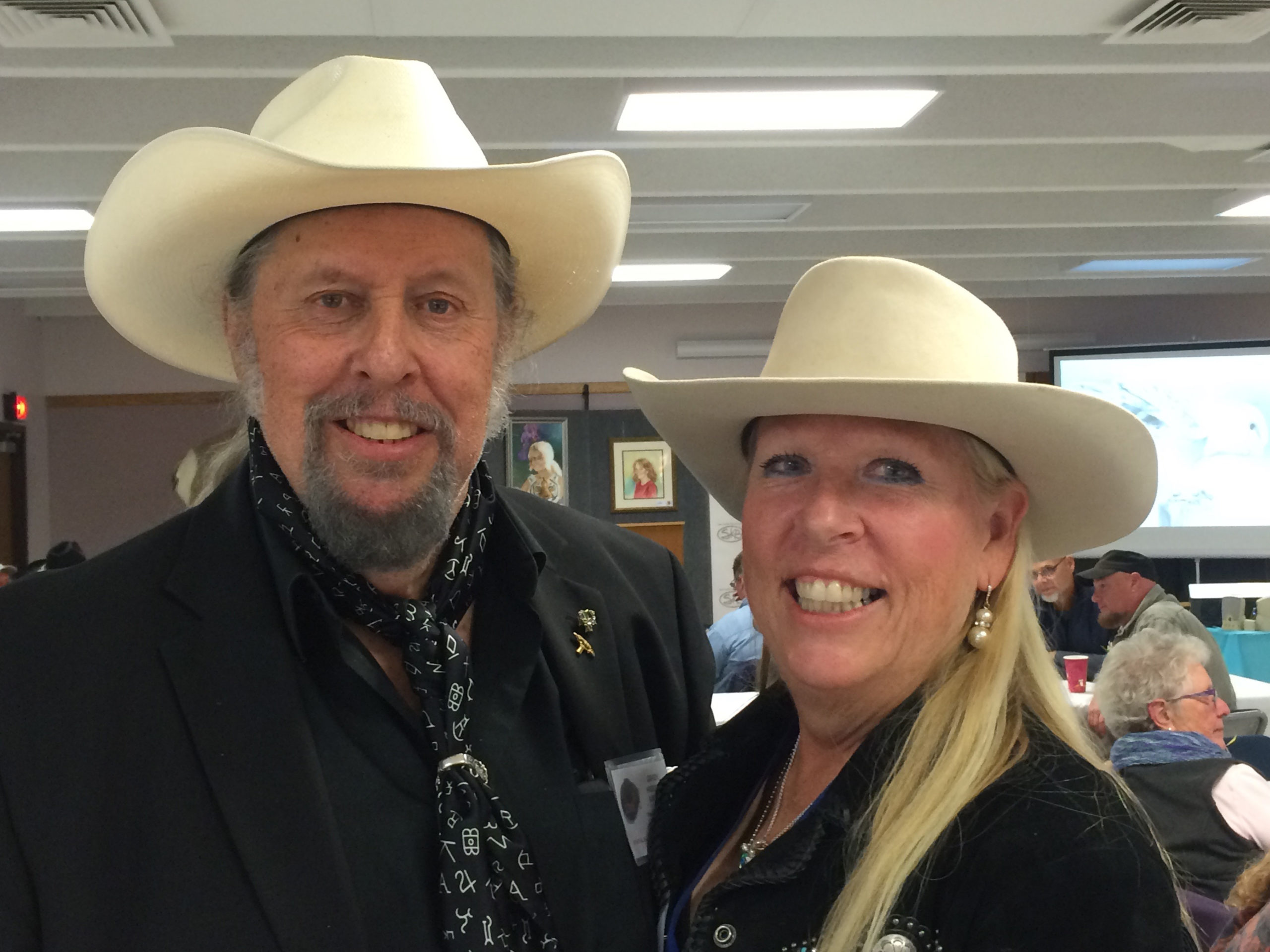
To view more of their representational art, please visit their website: www.seerey-lester.com


